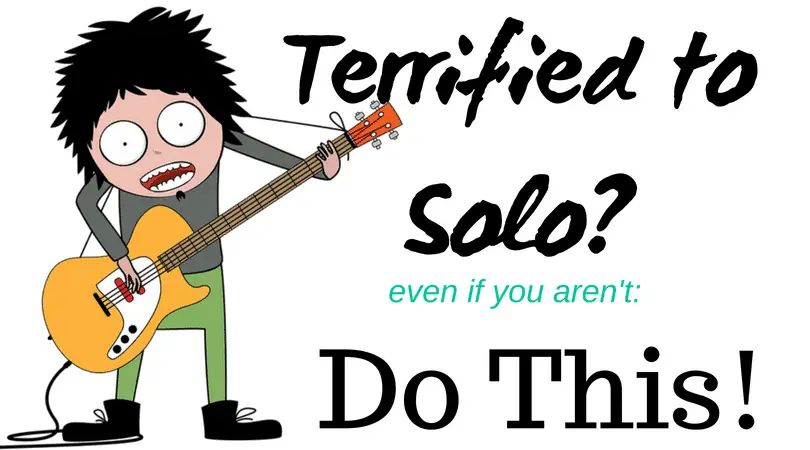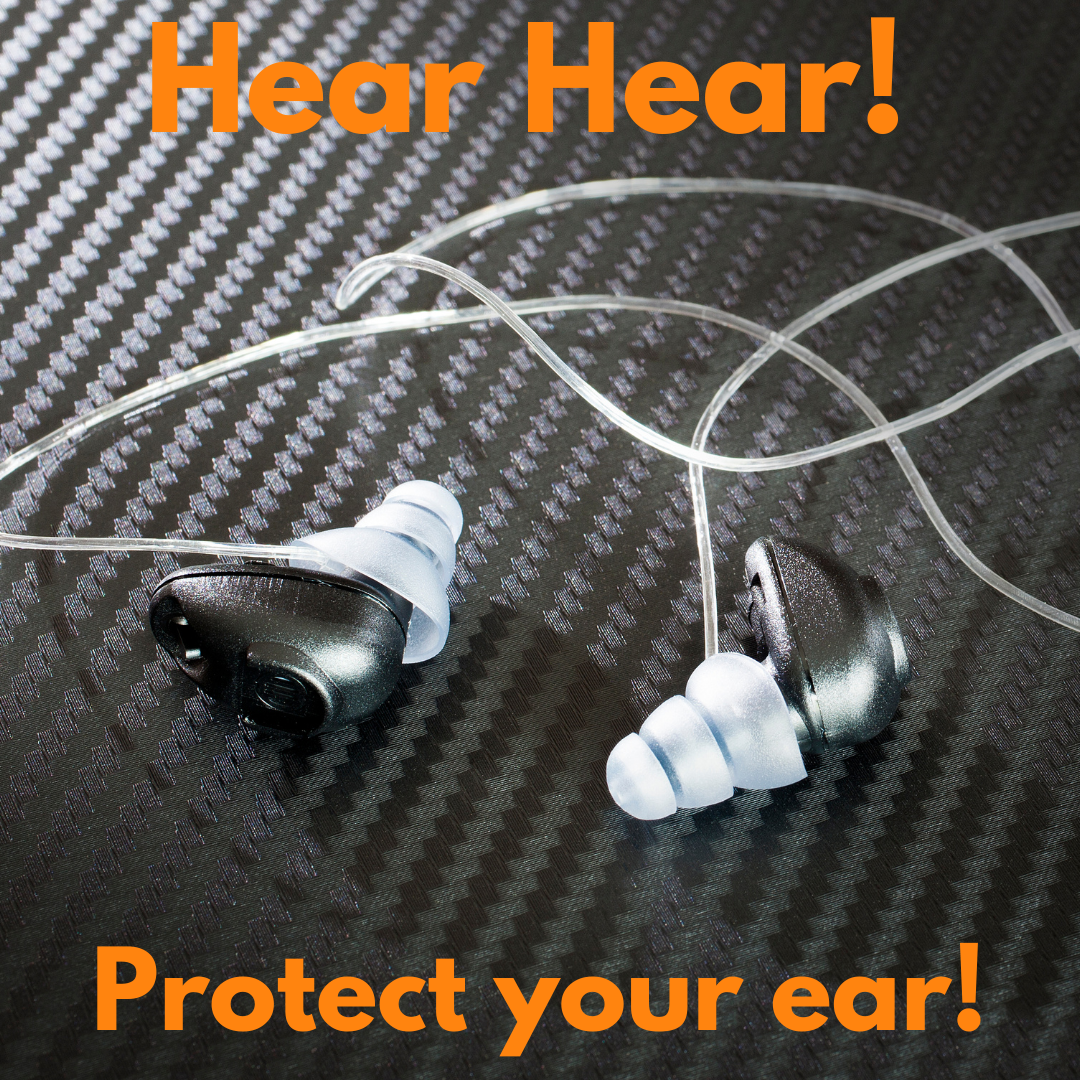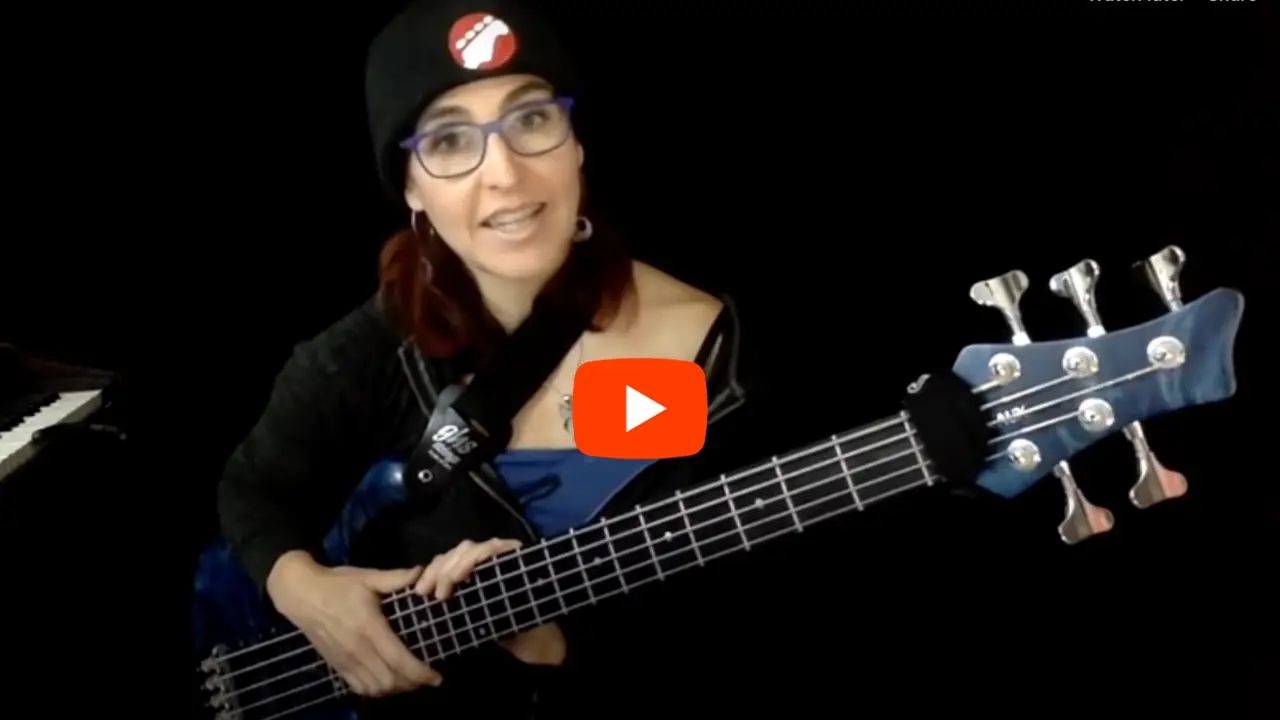Called to solo and feel cold sweat coming on? Wrestling with a million thoughts in your mind and feeling like you have to now play a million notes to impress everyone with your chops, speed, loudness, and amazingness?
There is lots to say about soloing effectively (more on that coming). But if this is new to you (and even if it isn’t): don’t worry! Here is one simple and very effective way to not only get you through it, but to help you lay down a solo with confidence, one likely to get you applause and support from the audience and make this whole scary thing a great experience!
(And even if you are a solo veteran, this is an effective way to approach a solo, so keep reading, bass ninjas!)
The Strategy is: Keep doing what you are doing!
Wait, what, really? Just keep grooving?
Yes, really! Try it!
Super effective and pretty much fail-safe in many different styles:
- If it’s a blues shuffle, carry on doing exactly what you are doing, grooving hard.
- Walking? Keep walking!
- Eighth note based groove? Hold steady!
- Funky sixteenth note fest? Persevere in style!
- Yummy reggae? Lay it down big, and fat!
It is great to hear the bass groove in all its glory without the usual melodies or solos on top. That alone is a switch in texture – and a welcome variation. The audience will take notice!
People appreciate hearing the bass line. Likely they will bop their heads, start clapping or shaking their booty just a tad more on the dance floor.
To make it work:
- Let the audience know what is happening – we are shining a light on the guy or gal who has been laying it down for everyone else all night, and making everyone dance and feel good! So, step out in front a little, especially if you have been hidden behind the guitarist for a while.
- Keep it steady! There is a danger to rush to keep up with your adrenaline. Keep your cool and focus on the kick drum and snare (or cymbal if Jazz) and take care to sync up your timing precisely. This will help with your rhythm. Forget about anything else – just kick and snare and how you match up!
- Stay loose. Easier said than done, I know, because you probably feel like you are floating from the ceiling and your arms and fingers belong to someone else, or are in a knot entirely! Two tips for that:
- SOS measure: think of your feet. Last you checked, they were on the floor.
- The floor makes you feel gravity. And your shoes! Then your toes, which reminds you that your limbs belong to you and helps you reconnect with your fingers.
- Take a breath. You’re okay.
- This takes preparation (the right kind): every day for a few minutes, practice technique properly and teach yourself a relaxed posture so you have a safe and comfortable place to return to in stressful situations. Our Music Theory course’s Finger Kung Fu Exercises span 20 units and go from basic to quite tough and prepare you optimally for pretty much any situation. Using PORA, you can get rid of bad habits fast and play with more confidence. These intense moments highlight the importance of training yourself relaxed technique off stage: so that the solid base you worked on at home has your back when it counts.
- SOS measure: think of your feet. Last you checked, they were on the floor.
The Next Level:
Okay, so you are beginning to feel more and more comfortable doing this, and you want to kick it up a notch or two. Great!
- Variation 1: First chorus: play your groove in the same range you were in at the beginning of your solo (typically: low). Then, for chorus #2: go up an octave! Keep doing what you are doing and know that the new range will give your solo quite the lift and a bit of a dramatic edge.
For a great ending (that also lets your band mates know that you are finishing up!) use the last bar or two of this chorus to walk your way back down to your “groove range”. Step back to your amp as you do that and/or give the singer a nod for her or him to come back in.
- Variation 2: Groove away for the first chorus. Then, remember one of my favorite exercises that we feature and practice aplenty in our Music Theory course:
Groove and Fill. There are many variations of this exercise but basically, the format is this:- Beats one and two: groove.
- Beats three and four: fill.
For a bass solo, it will work to extend this formula: one measure of groove followed by one measure of fill. Experiment. - This may mean you have to know what notes to use (pentatonic works great), but even if you use only the same notes that you used for grooving, it will create a great switch up. Play all eighth notes (or sixteenth notes, depending on the smallest subdivision) if you are feeling rhythmically timid (this will help you keep the beat). If you give “Groove and Fill” a good workout as part of your practice session, you have a solid tool for a pretty cool sounding solo under your belt that works in most situations!
Important Peptalk:
- If it feels scary and you are terrified to death, remember that a wrong note never killed anyone. Keep the groove going.
- Take on a confident stance – it is scientifically proven to help your emotional state by taking on a confident posture!
- Remember: you are a performer! Looking like you have fun and are enjoying yourself is a big part of your job! Get into it! If you “believe”, so will your audience!
- Think of it this way: The people in the audience and the musicians on stage all want you to do well – they are rooting for you (if nothing else because they want to confirm to themselves that they made a good decision by coming to this show).
The Take Away:
- Groove solos can be very effective as an entire solo or as a solid foundation to build upon.
- Play with confidence and dig deep into that pocket to let the groove shine.
- You will feel much better about your solo because now you’ve got a plan! A plan means you are not chasing the groove, you are in command and driving it. Win!!
When a “Groove Solo” is your very best bet:
As a matter of fact – if you are playing and the dance floor is full – this is hands down the best strategy for soloing. If you go all fancy, play the altered scale in quintuplets and amazing polyrhythms, it’s likely you will clear out the dance floor. So, do a chorus of just groove, then step it up a bit with the tips above, but never let go of repetitive groovy goodness to let the dancers know where the downbeat is.
Got some groove solo stories? Put them in the comments. If you don’t have any soloing stories yet, try the above and let us know how it went!










4 Replies to “Oh my, they want me to solo: Super Simple and Effective Strategy!”
Great tips Ari! I don’t get to solo–play at church–but still great techniques for regular grooving.
I love soloing when the band allows for it but I’ve never considered the points aforementioned. In hindsight it now seems all too obvious but I never thought about it. Your article has opened my eyes to an entirely new horizon–and it is very simple! Thank you, Ari.
Great advice- I’ve been playing for many years and still dread the unplanned bass solo and feel compelled to “show off”. Then I’m rarely satisfied with whatever I pulled out of my on such short notice! I like the idea of “keep grooving” and “groove and fill”. Thank you.
Great advice as usual. I remember playing in a big band once; I never did solos and I had no ambition to do them. However, during one session when members where taking solos the band leader pointed to me! I panicked and made aright fool of myself. He then began to have fun at my expense. My solution was when he pointed to me, I stared back, not budging off the groove until I was ready. It worked.